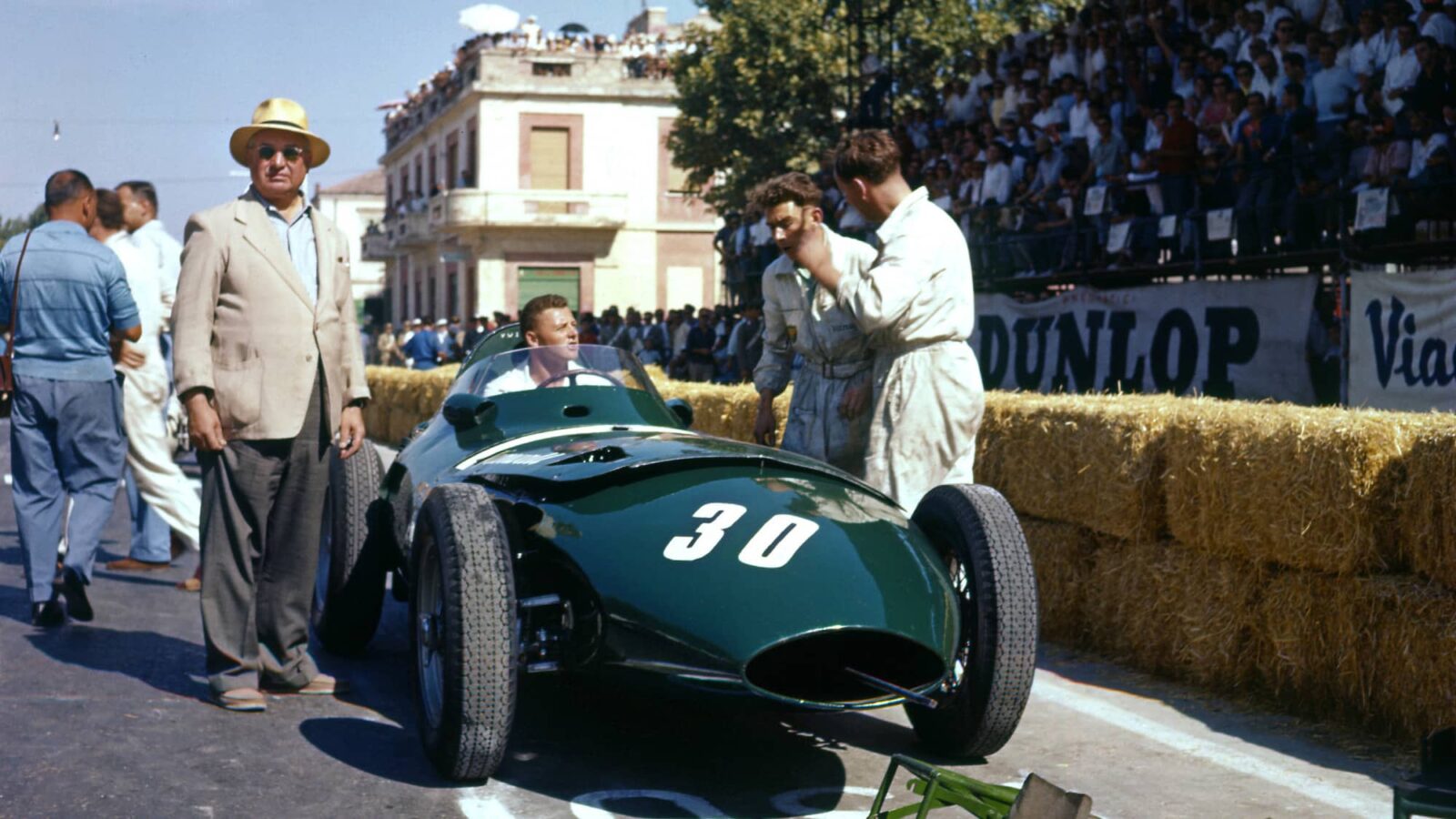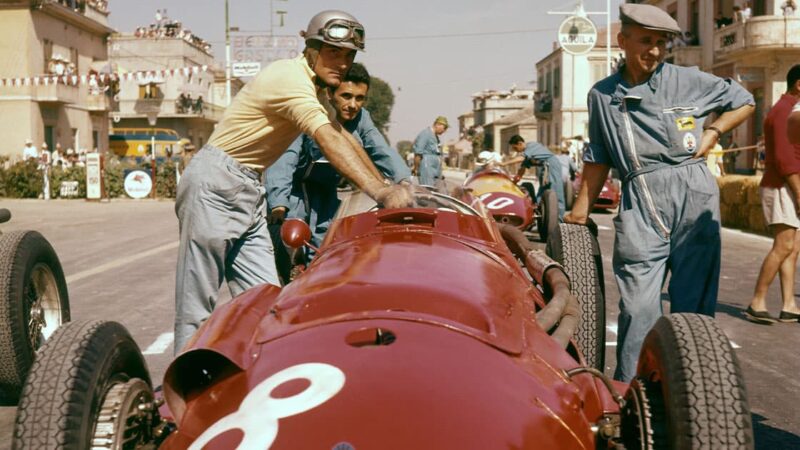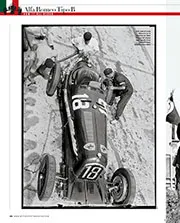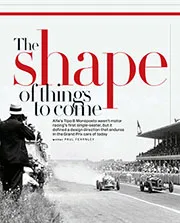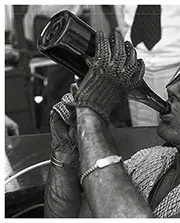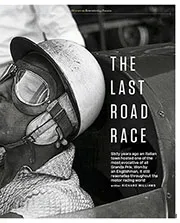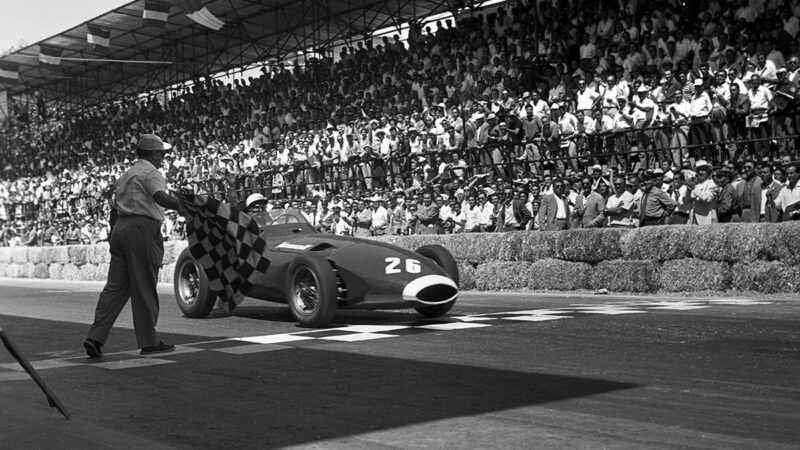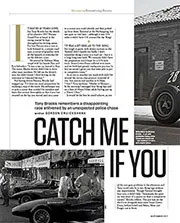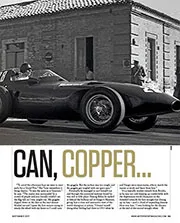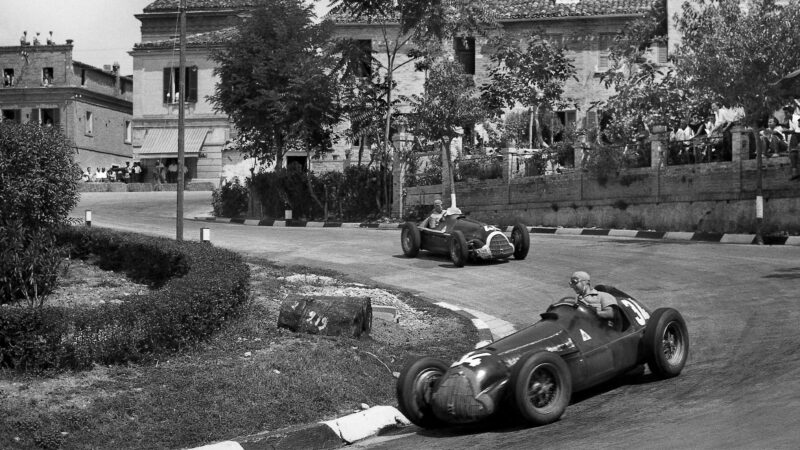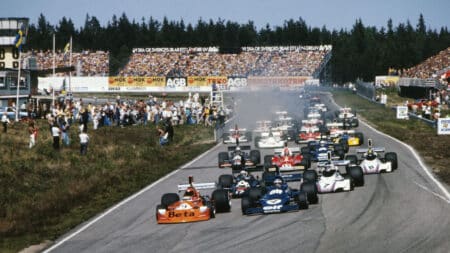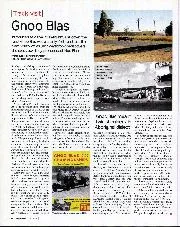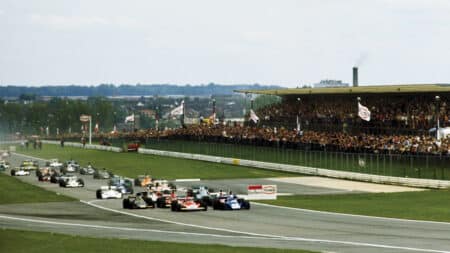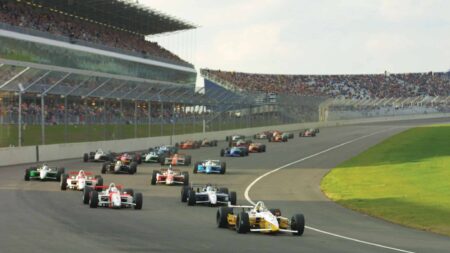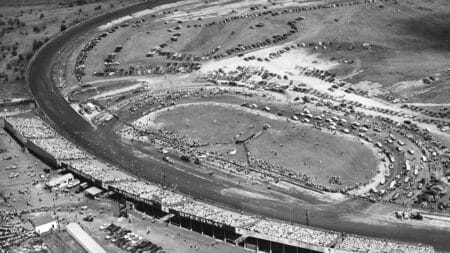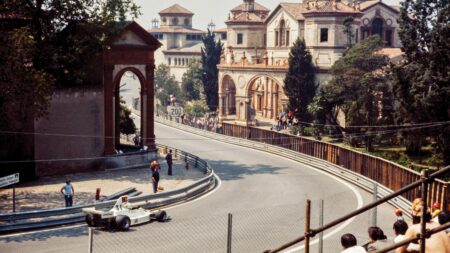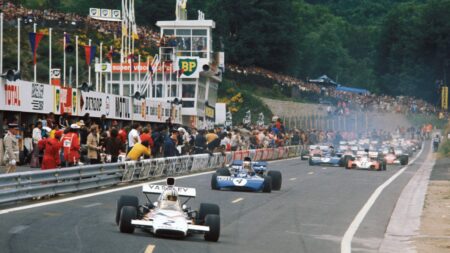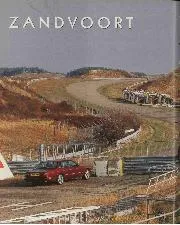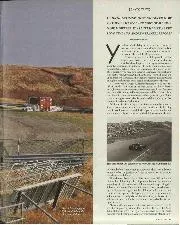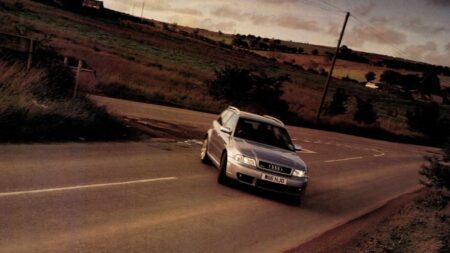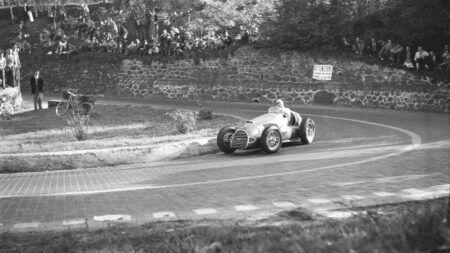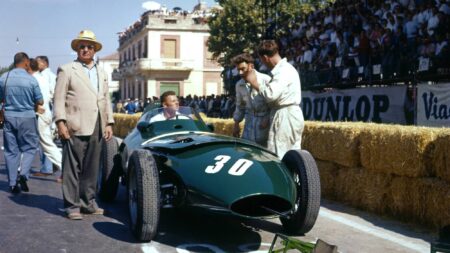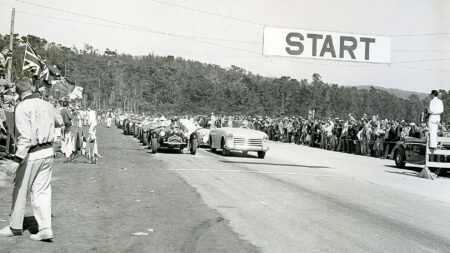Back in Pescara itself; we meet a bank manager who is at once captivated by our old photos of his town’s glorious motor-racing vintage. With a gasp of “Ah, Stirling Moss!”, he grabs an image of the No26 Vanwall and shows it to his colleagues. He is also able to confirm what our own eyes had told us: his bank was once the Agip garage pictured opposite the pit exit.
Luca works at the Lancia dealership beside what was once the starting grid. Though way too young to have seen even Lorenzo Bandini and Giorgio Scarlatti win the final race at Pescara, in 1961, he proves as enthusiastic as the bank manager about our quest. He beckons us into his showroom and proudly points to a framed black-and-white picture of the same establishment with Stanguellinis [Maranello’s oldest car maunfacturer] on the grid outside. Standing on the balcony above the garage is a young couple, Tino di Domenico and Emma Biganzofi, who would later become Luca’s grandparents.
Tino and Emma chose their vantage point wisely, for those opposite them, those at the very front of the grandstand, must surely have been overwhelmed by the sheer intensity of the spectacle, especially pre-1934, pre-chicane. In the furnace, surrounded by the excited hubbub of fellow spectators, seeing the cars flying down the straight before passing at around 180mph in a blast of hot fumes and yowl, is the sort of memory that would last forever.
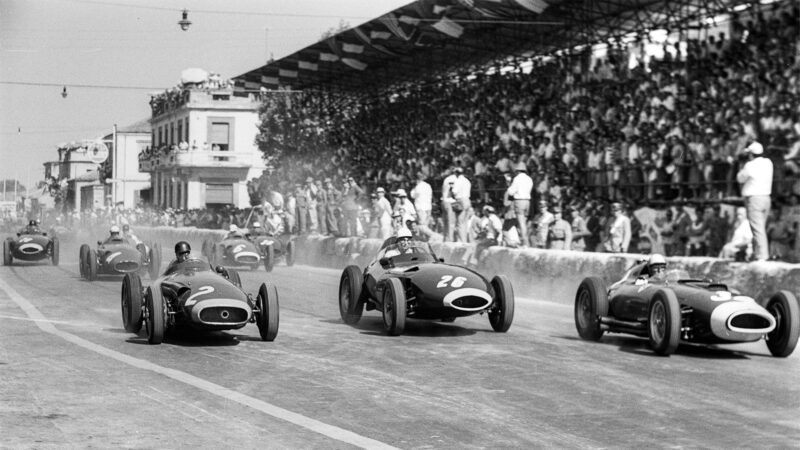
Pescara ’57 roars into life
Bernard Cahier/Getty Images
Another advantage of that grandstand is that it provided a superb view of the pits, where the mechanics tended to engines that had suffered from the eight miles of flat-in-top thrash that constituted half of the circuit split only by the 100-degree right-hander at Montesilvano, these F straights demanded masses of top-end grunt, and virtually no driving talent; just hang on, keep it away from the spectators who lined the road, and pray a tyre doesn’t let go.
This ritual punishment was too much for Giuseppe Campari’s Alfa Romeo P2, in the model’s second race, in 1924. Its 2-litre unit expired as its pilot fought to stave off the challenge provided by Giulio Masetti’s Mercedes. For Campari, there would be both short-and long-term consolations: Masetti, too, was forced to retire, while, over the next seven years, Giuseppe would win here three times.
Follow the course to the right at the end of the pit straight, under a railway bridge, and you will find yourself briefly on the Via Enzo Ferrari — in recognition of the winner of that inaugural race in ’24— before turning onto the even less imaginatively named Via del Circuito.
